DFI PCSF51 Review: A Credit Card Sized Ryzen Powered Mini PC
DFI PCSF51: General System Performance, Content Creation And Gaming
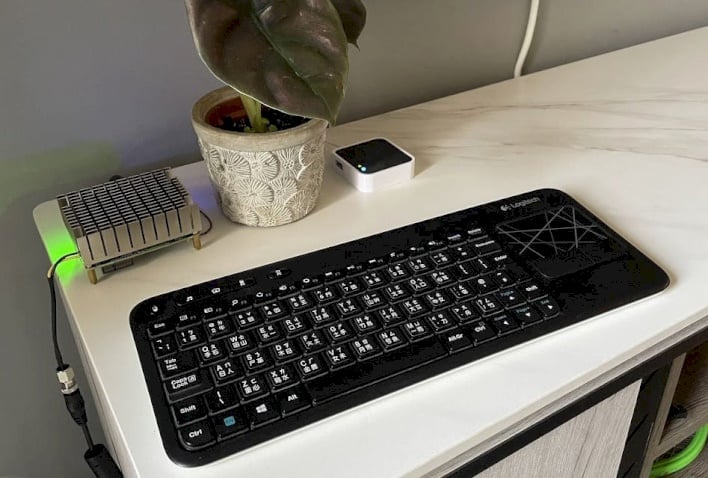
ATTO Disk Benchmark
Let us start by looking at storage performance using the ATTO Disk Benchmark. However, remember that this is an eMMC 5.0 device, so performance won't compare to even the most basic NVMe or even SATA SSDs. Our sample came with 64GB of eMMC 5.0 storage.
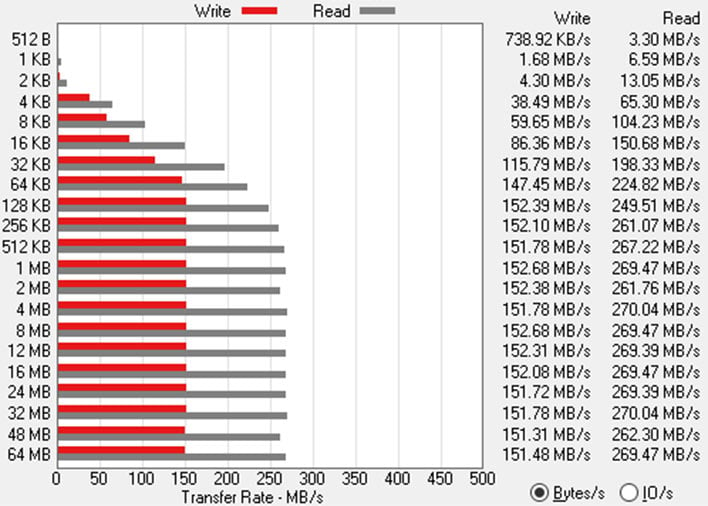
We are mostly used to systems sporting PCIe Gen4 and Gen3 SSDs now, but the DFI storage doesn’t feel terrible in day to day use for startup, browsing, word processing etc.
Speedometer Web App Benchmarks
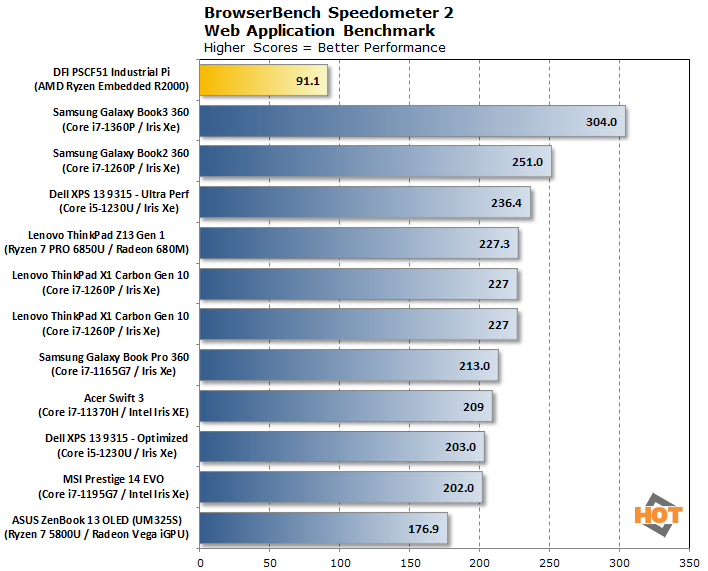
The tiny PCSF51’s result in BrowserBench Speedometer is well behind the contemporary pack. This is understandable given its meager 12W power budget, its modest core count for 2023, and it is actually using older AMD CPU and GPU architectures. The DFI SBC’s score of 91.1 in the BrowserBench Speedometer web app benchmarks isn’t terrible put into such a perspective.
That said, browsing the web doesn’t feel sluggish on this tiny Windows 10 PC. Many popular media-rich websites were browsed, using multiple open tabs, without any observed ill-effects. Moreover, some YouTube playback tests were done, and you can see that playing the highest resolution files available on Google’s video platform didn’t cause the PCSF51 to break a sweat, or drop any frames. Codecs such as AV1 and VP9 appeared to use the GPU's media engine to relieve strain from the CPU and keep things ticking over nicely.
That said, browsing the web doesn’t feel sluggish on this tiny Windows 10 PC. Many popular media-rich websites were browsed, using multiple open tabs, without any observed ill-effects. Moreover, some YouTube playback tests were done, and you can see that playing the highest resolution files available on Google’s video platform didn’t cause the PCSF51 to break a sweat, or drop any frames. Codecs such as AV1 and VP9 appeared to use the GPU's media engine to relieve strain from the CPU and keep things ticking over nicely.
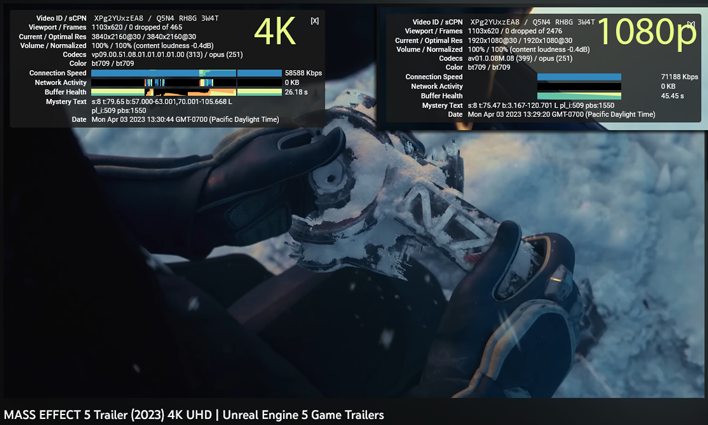
Cinebench R23 and Geekbench 5
You very probably aren’t going to be using this ‘Industrial Pi’ for 3D rendering, but considering Cinebench R23 is a widely used benchmark we tested it for reference purposes...
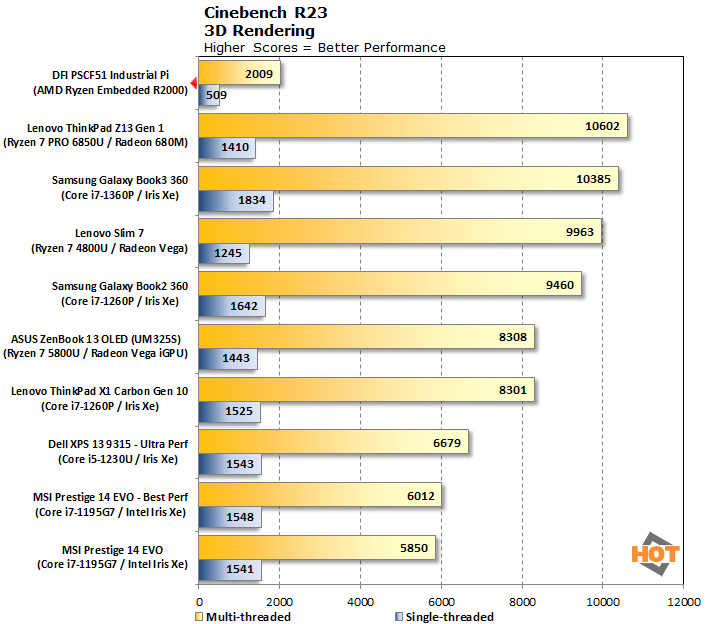

Again we are looking at bottom of the table results with the PCSF51 in Cinebench R23. In the Geekbench 5 CPU tests, the diminutive DFI scored: 1T 529, and nT 1789. Testing the GPU, we saw the Geekbench 5 Compute result of 6242.
UL PCMark 10
PCMark 10 leverages a mix of real-world applications and simulated workloads in order to assess how well a given system will perform across a range of common office and creative productivity tasks.

This is probably one of the best suited benchmarks for the DFI PCSF15 so far, and it does reasonably well with its overall score of 2709. In this kind of mixed productivity testing the DFI PCSF15 performed relatively well.
3DMark Night Raid
Some may be crazy enough to actually game on this Ryzen Embedded APU. It could probably make a passable effort with very old PC games, as well as for emulating classic consoles, 3DMark Night Raid, however, showed us that the integrated Radeon GPU with eight AMD Vega CUs is rather starved of power here.
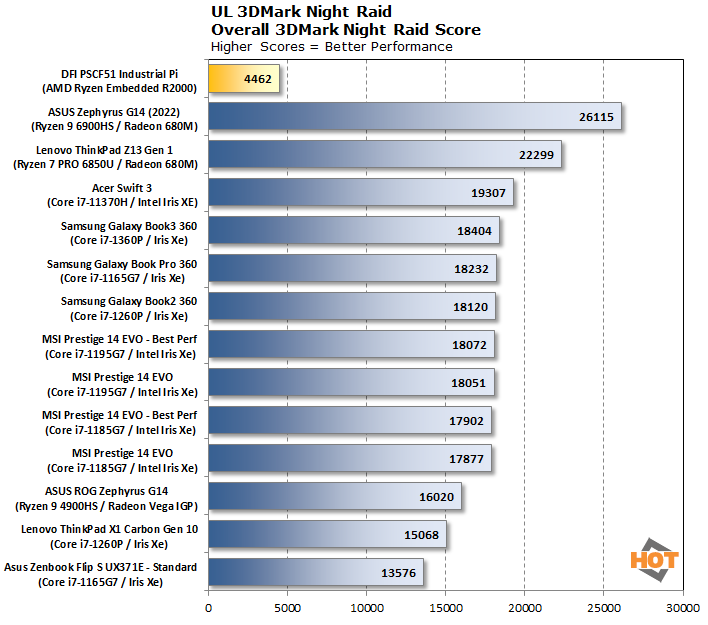
Though Night Raid is aimed at integrated graphics and DX12, a score of just over 4400 is only a quarter as fast as the Asus ROG Zephyrus IGP (which also wields eight AMD Vega CUs). Compared to a machine with a Ryzen 9 4900HS with 8CUs it runs at about a quarter of the speed in this benchmark.
Due to the dire result shown above, we didn’t want the DFI PCSF51 to have to face the indignity of a 3DMark Fire Strike Extreme test. However, the performance got us thinking about testing the device is a decade old PC game -- Tomb Raider 2013. It didn't fare well at 1080p Low settings with a min / max of 18.8 and 30.0 FPS. Opting to play the game in 720p Low settings gave us a much more playable benchmark result of min / max 38.0 and 62.0 FPS, with an average of 48.8FPS.
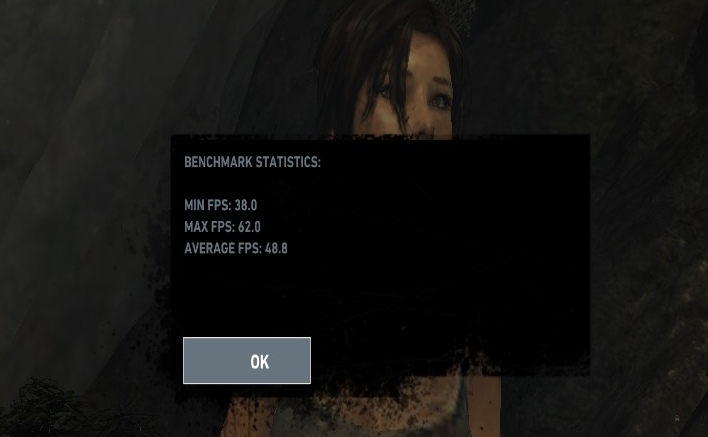
We also wanted to experiment with a bit of console emulation. The previous gen model from DFI, the GHF51, was praised for its emulation prowess. So, we fired up PPSSPP (a Sony PSP emulator) set the renderer to Vulkan and resolution to 3X for some fun.
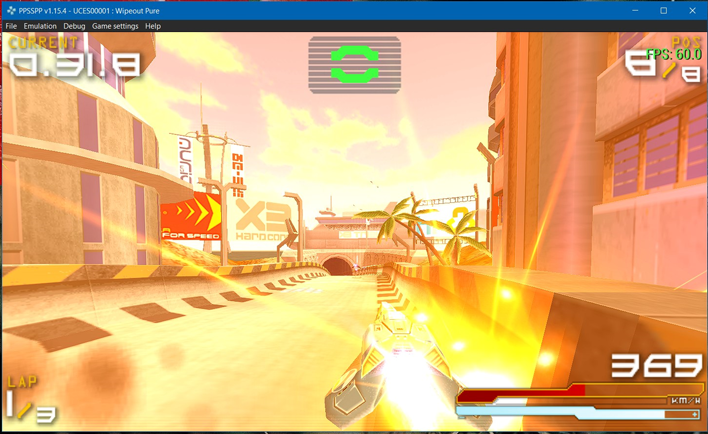
Titles seemed very playable and responsive, with the likes of Wipeout Pure mostly running at 60FPS with only a few occasional dips into the high 40s. Other games were fluid and fun at these settings.






